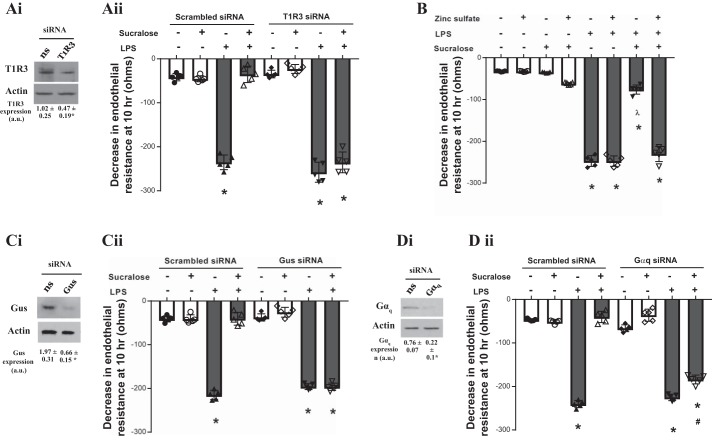Fig. 5.
Barrier-protective effect of sucralose is mediated through sensing by the sweet taste receptor. A, C, and D: equivalent numbers of rat LMVECs were transiently transfected with scrambled (300 nM, open bars) or T1R3 (300 nM, closed bars) siRNA (Aii), gustducin (Gus, 300 nM, closed bars) siRNA (Cii) or Gαq (300 nM, closed bars) siRNA (Dii). After 48 h, changes in endothelial monolayer resistance were measured using ECIS in the presence and absence of LPS (1 µg/ml) and sucralose (0.1 mM). Permeability is shown as drop in endothelial resistance measured at 10 h (ii). Knockdown of endogenous protein was confirmed by immunoblot analysis of lysates from transiently transfected cells with an antibody specific to T1R3 (Ai), gustducin (Ci), and Gαq (Di). B: monolayer permeability was assessed in the presence and absence of the sweet taste inhibitor zinc sulfate (0.7 mM). Changes in endothelial monolayer resistance were measured using ECIS in the presence and absence of LPS (1 µg/ml) and sucralose (0.1 mM). Permeability is shown as drop in endothelial resistance measured at 10 h; n = 5–6. Data are expressed as means ± SD. *P < 0.05 vs. vehicle for LPS; ʎP < 0.05 vs vehicle for sucralose; #P < 0.05 vs. LPS + vehicle for sucralose.

